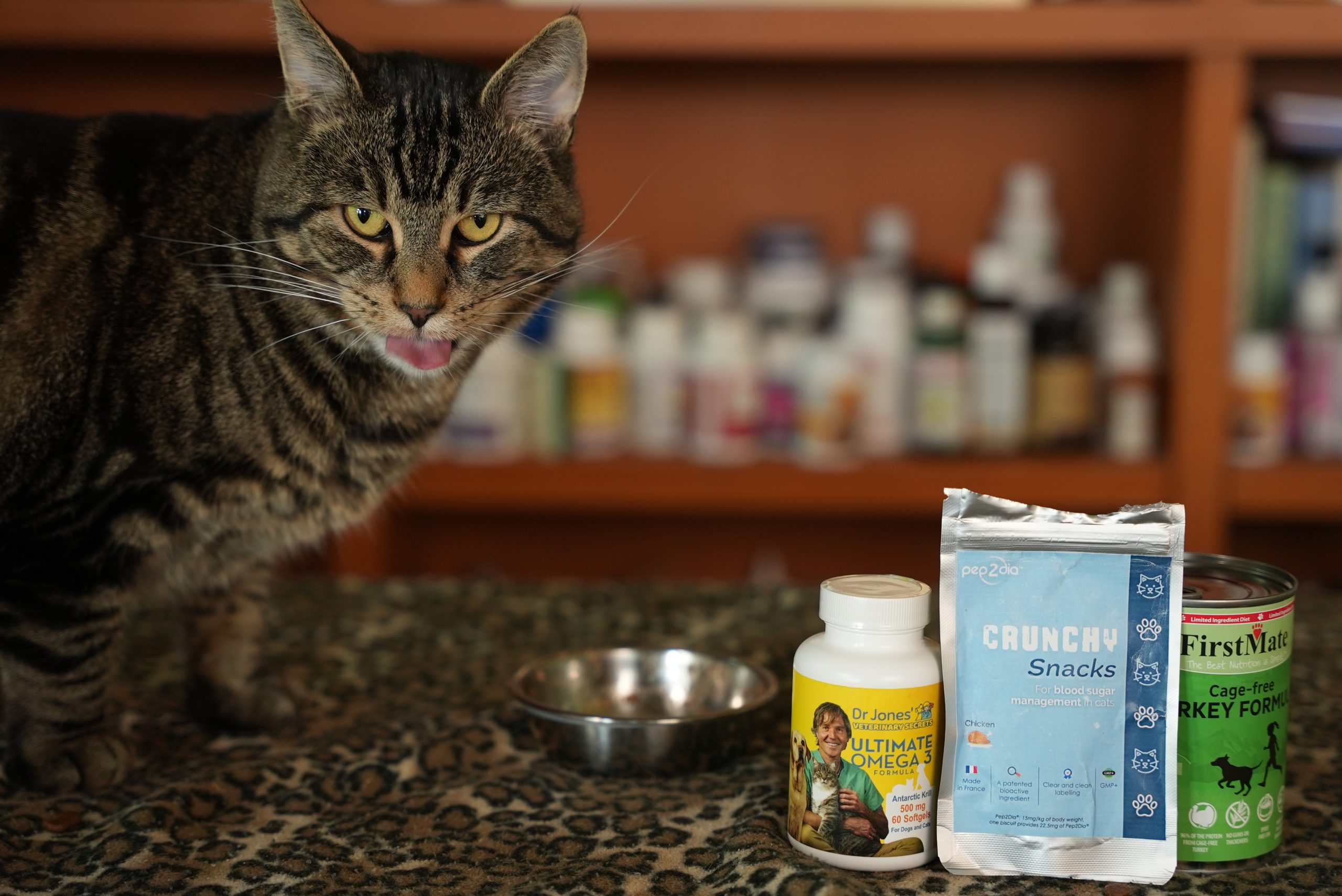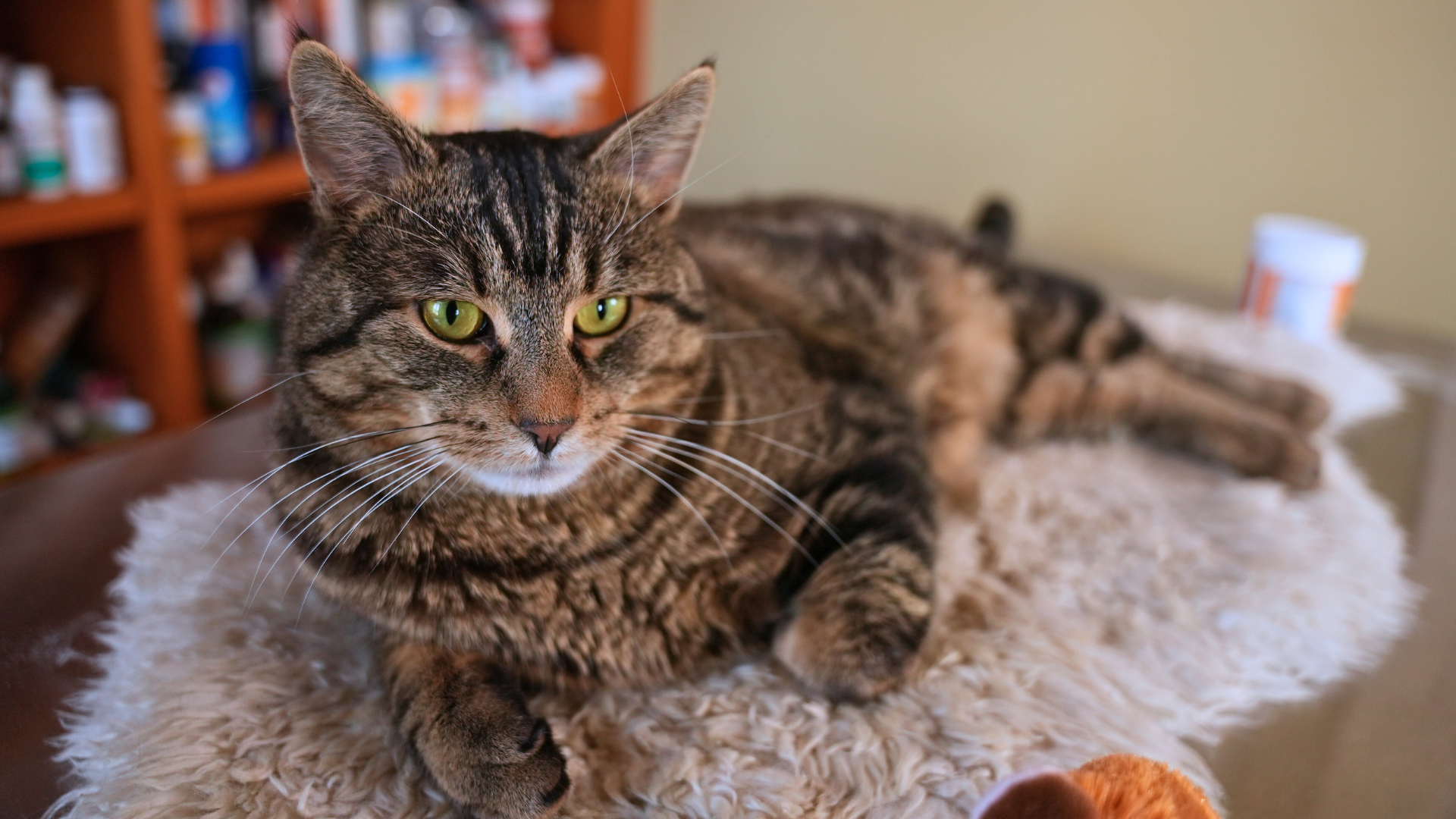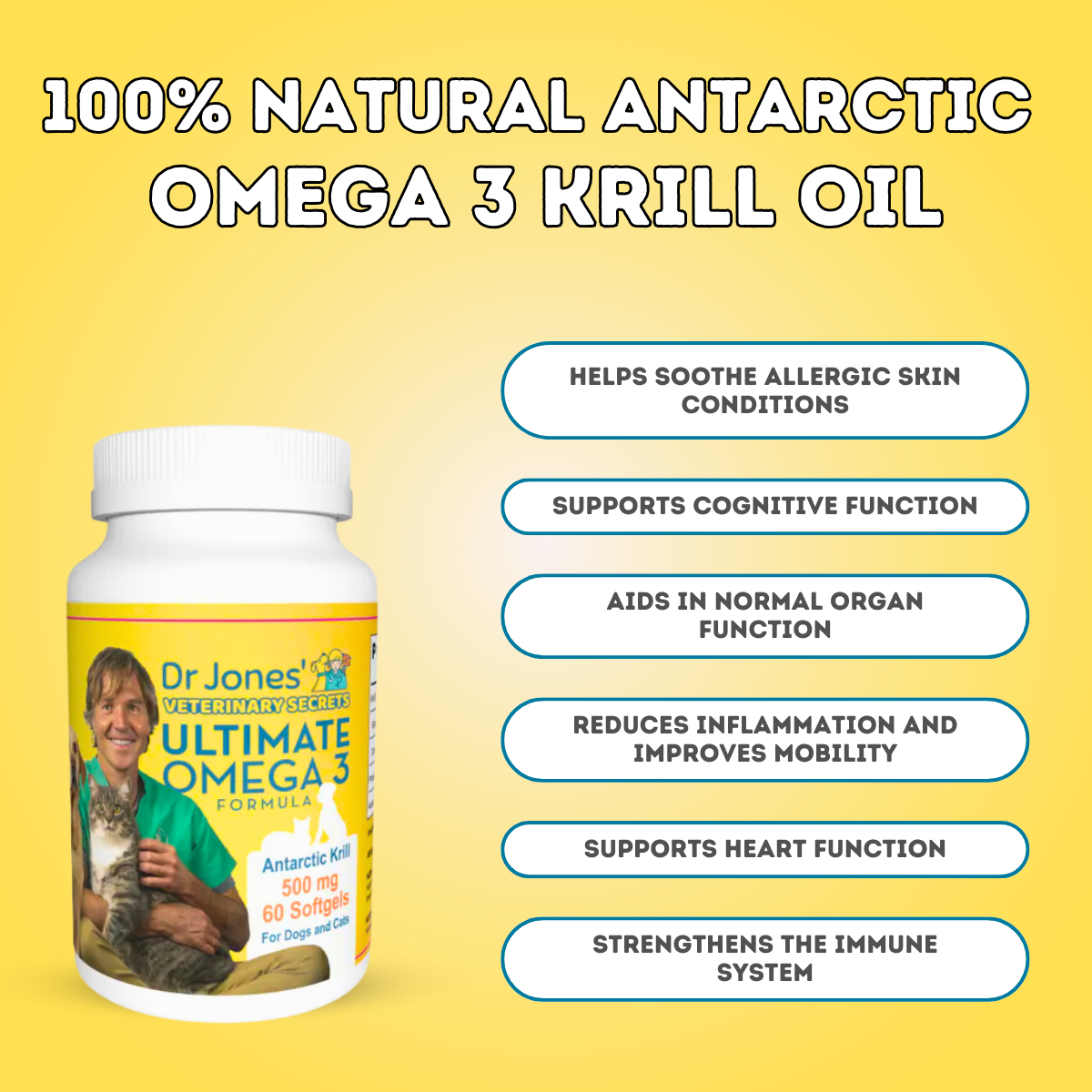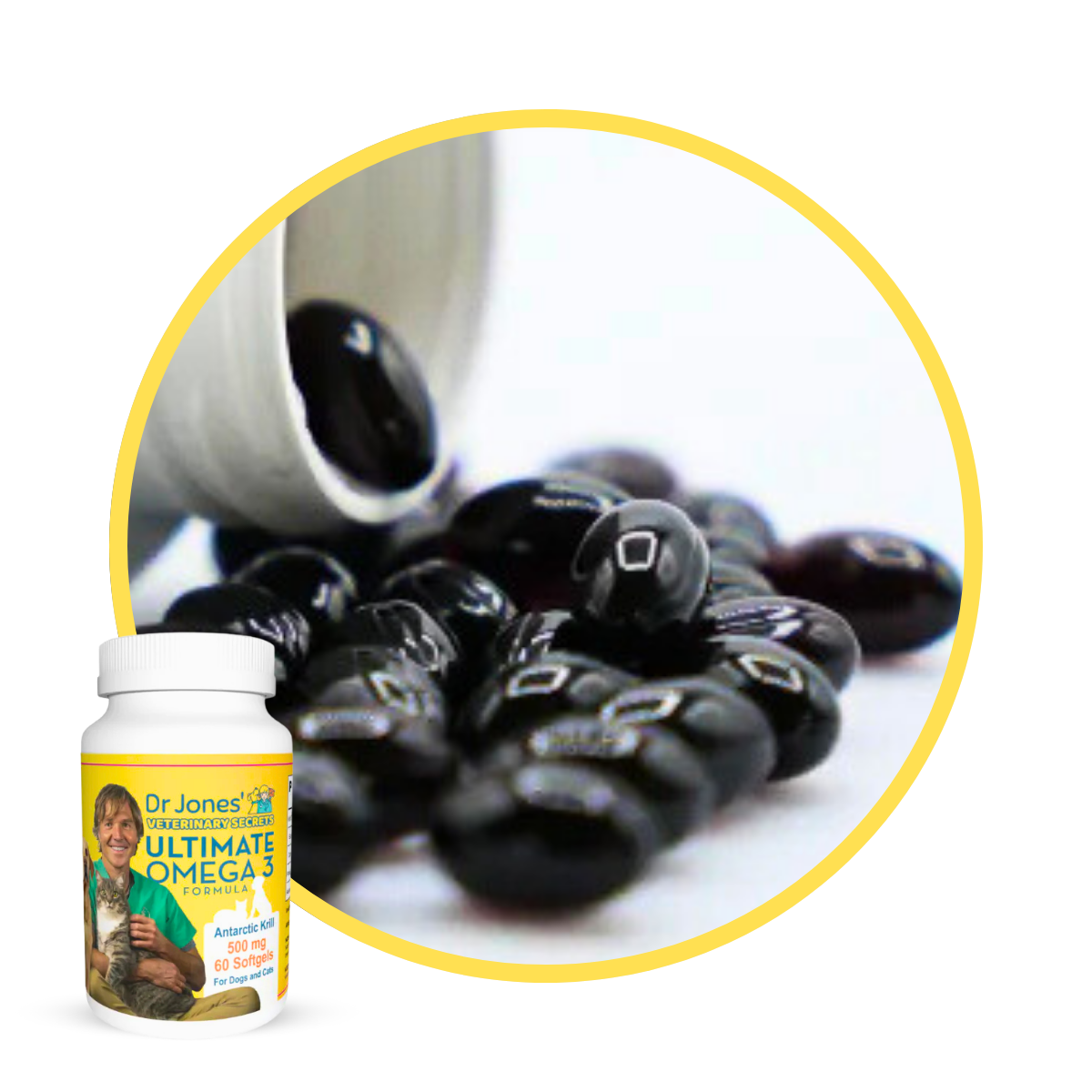New Diabetes Cure for Pets? A New Science-Backed Remedy for Pet Diabetes Revealed!
![]()
Diabetes in Overweight Cats: A Natural Approach to Managing the Condition
As pet owners, we all want the best for our animals. When it comes to diabetes, particularly in overweight cats, the condition can be challenging to manage. In this article, I’ll walk you through what you need to know about feline diabetes, how it develops, and how to manage it through diet, supplements, and natural remedies. I’ll also share some of my own experiences, including managing my cat, Cassian, who loves food just a little too much.
Omega-3 fatty acids are considered one of the most important supplements in veterinary medicine. Our Natural Antarctic Krill Oil provides high levels of the essential fatty acids EPA and DHA, with better absorption and bioavailability than many fish oils. Unlike fish oils, which may contain toxins, our Krill Oil is pure and potent. It supports your pet’s immune system, helps reduce inflammation, and can even improve insulin sensitivity—making it a great choice for diabetic cats. Whether your pet is dealing with diabetes or simply needs a boost in their overall health, this supplement can help.


Understanding Diabetes in Cats
Diabetes in cats, specifically Type 2 diabetes, is commonly seen in overweight animals. High-carb diets—especially dry kibble—are often to blame. You see, cats are obligate carnivores, which means their digestive systems aren’t designed to handle large amounts of carbohydrates. When cats consume too many carbs, it leads to blood sugar spikes, putting a lot of stress on the pancreas to produce insulin.
Why High-Carb Kibble Causes Problems
Most dry kibble is packed with carbohydrates, which are processed into glucose when digested. Unfortunately, cats struggle to break down carbs effectively. This not only causes spikes in blood sugar but also leads to increased strain on the pancreas. Over time, this stress can lead to insulin resistance, which is the primary cause of Type 2 diabetes in cats.
What Happens When Your Cat Has Type 2 Diabetes?
In cats with Type 2 diabetes, their bodies stop responding properly to insulin. This means that blood sugar (glucose) isn’t properly stored or used, leading to higher-than-normal blood sugar levels. While the pancreas still produces insulin, it’s not enough to overcome the cells’ resistance. Early signs include excessive drinking, urination, and sometimes an increased appetite. As the condition progresses, these symptoms intensify, and your cat may start to lose weight or become lethargic.
Clinical Signs and Diagnosis of Diabetes in Cats
One of the first signs you may notice is your cat drinking more water and urinating more often. You might also notice that your cat seems extra hungry, only to lose weight despite eating more. When this happens, it’s important to get a blood test and urine analysis from your vet. Most diabetic cats are treated with insulin injections, but there are other ways to manage their condition naturally.
A Natural Remedy for Managing Diabetes: Pep2Dia
One of the natural remedies I’ve been excited about is a bioactive ingredient called Pep2Dia, derived from milk protein. It has shown great promise in helping regulate blood sugar levels in diabetic cats. How does it work? Pep2Dia inhibits an enzyme called alpha-glucosidase, which is responsible for breaking down carbohydrates into glucose. By slowing this process, Pep2Dia helps reduce the blood sugar spikes that often occur after meals.
How Pep2Dia Improves Pancreatic Function
In addition to reducing blood sugar spikes, Pep2Dia also helps support pancreatic function. By slowing the breakdown of carbohydrates, Pep2Dia reduces the amount of glucose the pancreas needs to process. This gives the pancreas a break and helps improve insulin production. Clinical studies have shown that Pep2Dia can reduce the activity of the alpha-glucosidase enzyme by up to 40%, which is a huge benefit for diabetic cats.
Clinical Studies: Does Pep2Dia Work?
The clinical results are promising—Pep2Dia has been shown to reduce blood sugar levels by up to 21% after a meal. With long-term use, significant reductions in blood sugar and glycated hemoglobin levels (which reflect average blood sugar over a three-month period) have been observed. The recommended dose for cats and dogs is around 15 mg per kilogram of body weight. For example, Cassian, who is at risk for diabetes, receives 3 to 4 small treats daily containing 22 mg of Pep2Dia. It’s been great to see the improvement in his overall health, and I’m excited to see if other diabetic pets benefit as well.
Diet Changes to Manage Diabetes in Cats
Another key change I’ve made in Cassian’s diet is eliminating kibble. Instead, I’ve switched him to high-protein canned foods, like turkey and chicken. This simple change has made a huge difference in managing his blood sugar levels. A high-protein, low-carb diet prevents the rapid glucose spikes that can worsen diabetes. In fact, in my veterinary practice, I’ve seen over half of my diabetic cats come off insulin after making this dietary change.
The Power of Omega-3 Fatty Acids for Diabetic Cats
In addition to diet changes, omega-3 fatty acids can be incredibly beneficial for cats with diabetes. These essential fatty acids help improve insulin sensitivity, making it easier for your cat’s cells to respond to insulin. Omega-3s also support weight loss by boosting metabolism, burning fat, and preserving lean muscle. I give Cassian omega-3 supplements to help with his allergies, but it’s also been great for his overall health and insulin sensitivity.
How to Administer Omega-3 Supplements
I’ve found that using a garlic press to squeeze omega-3 supplements over Cassian’s food works great. I use two 1,000 mg krill oil capsules, which are easy for Cassian to consume and give him all the benefits of omega-3 fatty acids. The supplements not only help with diabetes but also support his overall well-being, including reducing inflammation and improving joint health.
Summary: Natural Remedies and Diet Tips for Managing Feline Diabetes
Managing diabetes in cats requires a multifaceted approach, starting with eliminating high-carb kibble and switching to a high-protein, low-carb diet. Adding supplements like omega-3 fatty acids can help with insulin sensitivity and overall metabolic health. Additionally, Pep2Dia offers a promising natural remedy to regulate blood sugar levels and improve pancreatic function. By following these guidelines, I’ve seen great results in managing Cassian’s diabetes, and I believe they can help your cat too.
If you’re interested in learning more about natural remedies for diabetes and other pet health topics, I invite you to subscribe to Veterinary Secrets and check out my free book on the subject.

Key Takeaways:
-
Eliminate kibble and switch to high-protein, low-carb canned food to manage blood sugar.
-
Pep2Dia can help regulate blood sugar levels and improve pancreatic function.
-
Omega-3 fatty acids support insulin sensitivity, weight loss, and overall metabolic health.
Omega-3 fatty acids are considered one of the most important supplements in veterinary medicine. Our Natural Antarctic Krill Oil provides high levels of the essential fatty acids EPA and DHA, with better absorption and bioavailability than many fish oils. Unlike fish oils, which may contain toxins, our Krill Oil is pure and potent. It supports your pet’s immune system, helps reduce inflammation, and can even improve insulin sensitivity—making it a great choice for diabetic cats. Whether your pet is dealing with diabetes or simply needs a boost in their overall health, this supplement can help.










Where do I get peo2dia??